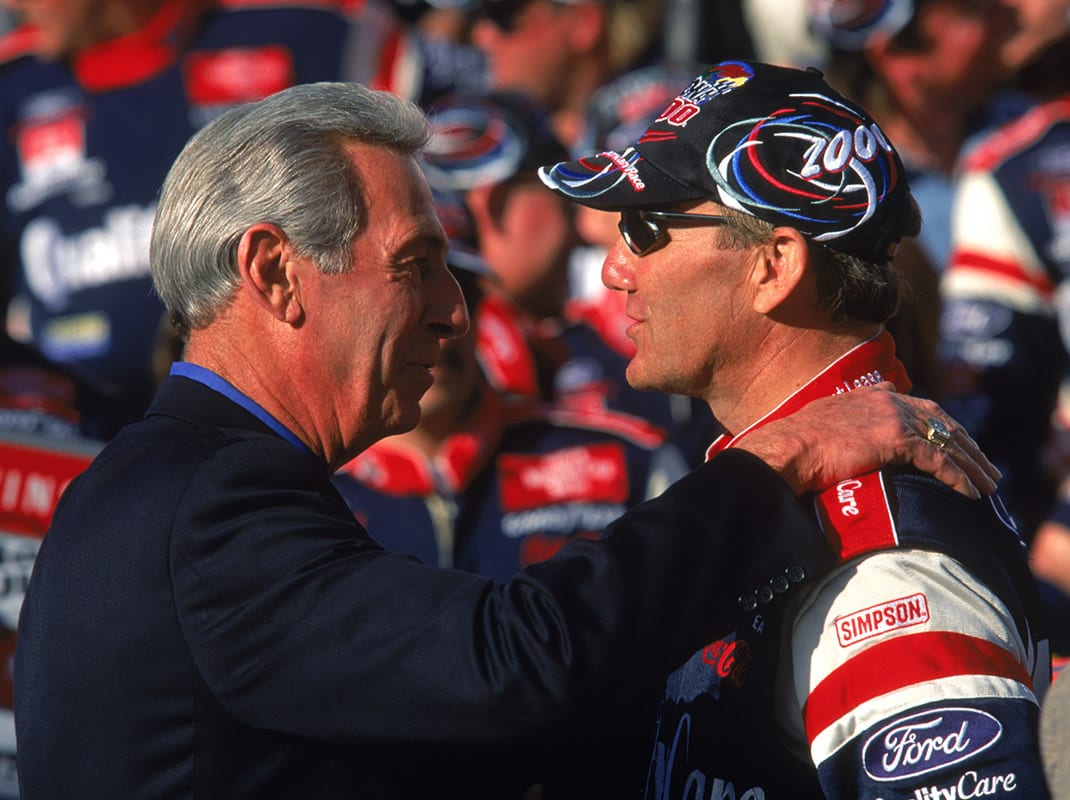Those who have left the NASCAR spotlight and ended their NASCAR driving careers have done so for a variety of reasons. Whether leaving on their own terms or because of decisions made by others, it’s a difficult road to travel, especially during the transition from a winning driver to retirement.
The drivers’ stories throughout NASCAR’s seven-decade history are very similar.
For instance, Ned Jarrett, the NASCAR Cup Series champion in 1961 and ’65, retired at the end of the 1966 season. The winner of 50 races, Jarrett retired at the pinnacle of his career.
“There were many reasons why I retired when I did,” Jarrett said. “One important vow that I made to myself was that no matter how much success I had as a driver, I would quit while I was on top and not do it on the down side of my career. People have a tendency to remember the last thing you did, and I didn’t want them to remember me as a struggling driver.
“I felt like I had some good years left ahead of me, but I had suffered a crash in 1965 and broke my back,” Jarrett added. “I adjusted to that injury and returned to good health and went on to win the championship that year. I really was still in very good physical shape but when Ford pulled out of NASCAR in 1966, I decided it was time.
“Also, my children (Glenn, Dale and Patty) were young and I was missing out on all of their activities while they were growing up and it was important for me to be there for them,” Jarrett said. “But I will say if I had known I was tied with Junior Johnson with 50 wins, I may have stayed a little longer to get ahead of him on that.”
Jarrett, a 2011 inductee into the NASCAR Hall of Fame, became an award-winning radio and television broadcaster after leaving the driver’s seat.
On Oct. 12, 2007, Jarrett’s son, Dale, the 1999 Cup Series champion, announced his retirement after 23 years of driving. The winner of 32 Cup Series races made his last start at Charlotte (N.C.) Motor Speedway in May 2007.
Like his father, Dale Jarrett built a successful broadcasting career that continues today. He was inducted into the NASCAR Hall of Fame in 2014.
David Pearson, winner of 105 Cup Series races between 1960 and 1980, is second only to Richard Petty in Cup Series victories.
When Wood Brothers Racing driver Neil Bonnett was injured in a crash at Dover Int’l Speedway on Sept. 17, 1989, Pearson, who drove the famed No. 21 car from 1972 until ’79, tested for the team at Charlotte Motor Speedway with an eye on subbing for Bonnett. However, citing recurring back and neck pain, Pearson decided against returning to racing and retired.
Bonnett died of injuries suffered in a crash at Daytona Int’l Speedway in February 1994 and Pearson passed away after a lengthy illness in November 2018.
Injuries have ended the careers of multiple drivers. Bobby Allison, the 1983 Cup Series champion and winner of 85 races, suffered a near-fatal crash at Pennsylvania’s Pocono Raceway on June 19, 1988. Years of recuperation followed but Allison, who continues to be one of NASCAR’s greatest ambassadors, never raced again. The 2011 NASCAR Hall of Fame inductee doesn’t recall much of the 1988 season, including winning the Daytona 500 over son Davey Allison.
“That year, I won the Daytona 500 for the third time and was on top of my career,” Allison said. “I truly thought I would race forever or at least quite a few more years than I did, even if that was a few Cup races and maybe some short-track events. But the crash at Pocono changed everything. I had a tremendous career but that wasn’t the way I ever thought my career would end.”
In November 1992, Richard Petty ended his driving career at Atlanta Motor Speedway after 200 victories in 1,184 starts. For the past 27 years, Petty has concentrated on team ownership and representing the sport. At age 82, he still attends many Cup Series events.
Click below to continue reading.
